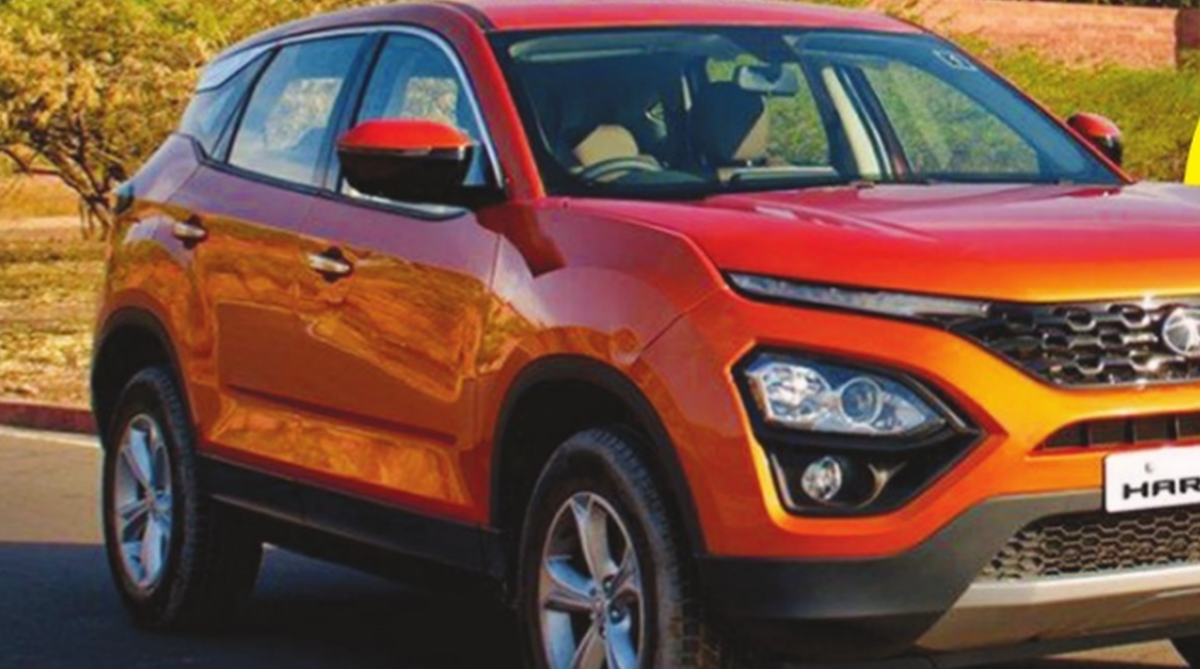Seven colors of Tata Harrier
Besides the two new colour options, the Harrier is also offered in Oberon Black, Calypso Red, Orcus White and Daytona Grey.
So 2019 is finally here! For car enthusiasts, it’s going to be great year with some of the much hyped launches finally taking place.

So 2019 is finally here! For car enthusiasts, it’s going to be great year with some of the much hyped launches finally taking place. Among these, Tata Harrier is definitely a prominent name on the list. While the official launch is scheduled in last week of January, we got to check out the car on an exclusive media preview in Jodhpur.
It’s been 10 years since India’s superpower in car manufacturing and Tata Motors acquired Jaguar Land Rover (JLR). In the last few years, we did notice a significant change in styling and enhancement in performance of the Tata’s new cars ranging from Tiago to Nexon. However it’s finally in 2019, we get to experience a Tata Motors car that has not only been inspired from JLR but has also been adopted from it. Yes, Tata Harrier uses the same platform – Omega ARC architecture, which is used by Land Rover Discovery Sport and the Range Rover Evoque. Does it look and perform like those? Let’s check it out.
Advertisement
Till you get in
Advertisement
The Calisto Copper Harrier standing at the porch of the hotel at Jodhpur did stand out. It takes time to come with the terms of the massiveness and premiumness oozing out of a Tata SUV. While a close look is required, but you can well understand that the car does mirror the design ethos of a Range Rover Evoque. The blade-like LEDs at the top double up as daytime running lamps and indicators, and look very aggressive – especially leading up from the piano black grille. Harrier is the longest and widest car in its segment when compared to Hyundai Creta, Jeep Compass and XUV 500. The wheelbase is 17-inch with alloy finish and the wheel arches are massively curvaceous. The rear looks typical Jaguar with a slim, high set, rear-windscreen. The tail lamp is LED, however the indicators and reversing lamps are halogen.
Sitting in the front
As you settle in the front seat, you can get a full view. The interior has been tastefully done. A dark faux wood, black and brushed aluminium finish on the dashboard, a floating section with the 8.8-inch touchscreen infotainment system (seven-inch ones with fewer functions on lower models) sit in the centre. The instrument panel also gets partially digital on the RPM side. You can read the navigation, music on the instrument panel as well for ease of driving. The handbrake is designed like a throttle of an aeroplane to give you the cockpit feel. The front seats come in leather upholstery and are bolstered. There is a chocolate brown leather motif inside the cabin. These test cars being preproduction ones, reported issues of finesse. The leather covered rails on the centre console came off during our drive. Another disappointment was the lack of electric seat adjustment. Besides the steering wheel looks quite like a regular one and doesn’t match the premiumness of the interior.
Rear Seats
Thankfully, getting to the rear seats isn’t a climb and that’s when you realize there is ample space. The 2,741 mm of wheelbase has helped Harrier achieve such a comfortable seating in the rear as well. With big windows, you sit high up and won’t get tired in long drives. The rear AC vents are placed in the side pillar. While a cramped third row could have been achieved, Tata thought it wise to keep it as a 5-seater. The boot space is 425 litres but thanks to the shape, it looks huge and quite convenient to load luggage.
Drive quality
At the launch, Harrier will be available only in 1,956cc, turbocharged, four-cylinder diesel. Peak torque of 350Nm is available from a fairly low engine speed range of 1,750rpm to 2,500rpm. So driving the Harrier is easy at any speed. There are multi drive modes: City, Eco and Sports, along with Hill Drive and Rough Road controls. For people looking for an automatic gearbox or a 4-wheel drive, you would be disappointed. Harrier’s arch rival Jeep uses the same motor but produces better power. However the torque for both the cars clock at 350 Nm.
The gearbox is 6-speed manual. The clutch and gearshift action is quite impressive. However the engine noise is terrific inside. A great insulation needs to be worked out as post 2,500 RPM, it becomes a bit unbearable and tiring on long road trips.
For short people, driving the car isn’t much of fun as the A-pillar is huge and extends till front creating a major blind spot in city drives. Besides the mirrors, though looks great from outside, are placed a bit high and reason for blind spot. Taking a cue from Discovery Sport, Harrier uses an independent suspension in front however the rear one is Tata’s own torsionbeam set up. And the duo delivers an absolute comfort in slow as well as high speeds. The power steering is a hydraulic one like in Hexa but at higher speed, it does produce a good control. We tried and tested the car in rocky terrain of Rajasthan and the Rough Road control did a wonderful job.
Expected price
As the car is expected to hit the market in January-end this year, auto critics in the country are estimating a start price of Rs 13 lakh onwards for a car of this sort. While Jeep Compass and Hyundai Creta are severely overpriced in the segment, Tata Motors has ample room to change the SUV game, which it is quite efficient at.
Advertisement